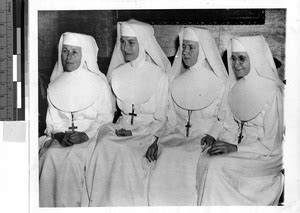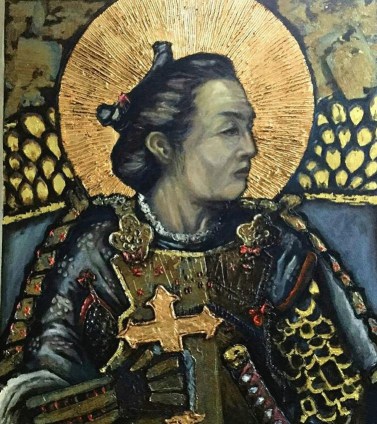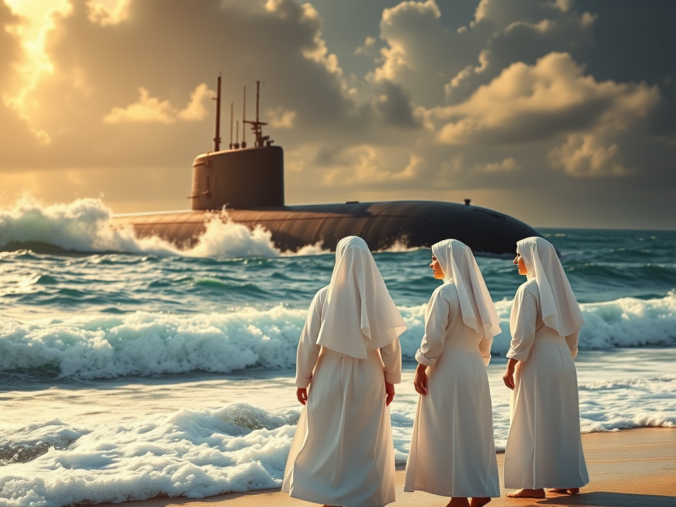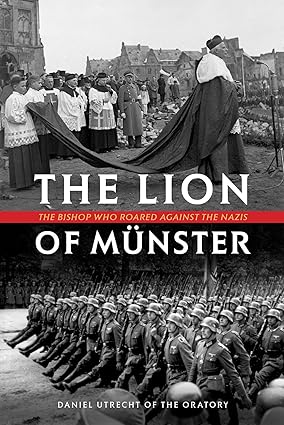A Catholic novelist presents some ideas of the top of his head
Hollywood has always had a fascination with the Catholic Church. But that’s not to be confused with admiration. In the early days of Tinsel Town, there were many pro-Catholic films, as the studio moguls pandered to the Catholic masses (no pun intended) and attempted to keep the Legion of Decency at bay. In recent years, most depictions of Catholicism have been negative, with any favorable, or at least even handed, release being few and far between.
As I write, the 2024 film Conclave, a scurrilous, defamatory, and heretical depiction of the inner workings of the Catholic Church, has earned $53,723,745 at the worldwide box office. It was been widely nominated on the award circuit, (but for a single Golden Globe for Best Screenplay, it’s been shut out), and we can expect it to be among the Oscar contenders, if the Academy is so bold as to hold that tedious, self-congratulatory exercise so soon after the Palisades conflagration.
Conclave shows that hating on the Church pays. But even more profitable is honoring the faith, as Mel Gibson so brilliantly demonstrated in 2004 with The Passion of the Christ. In that vein, earnest creators within Hollywood have in recent years tried to promote the faith with movies like Fatima, Nefarious, Cabrini, and Wildcat. Nevertheless, there’s always room for more.
Catholicism is a religion etched in history. It exists because God chose to enter human history—physically, as our incarnate Redeemer. Plus, there’s nothing Hollywood loves more than a true story (which they can tell falsely). Thus, I thought it would be fun to list a few persons and/or events from history that would make great Catholic films. So, without further ado, let’s look at these five subjects.
Four Nuns on a Submarine
Think Operation Petticoat meets The Lilies of the Field with a little Heaven Knows, Mr. Allison and Destination: Tokyo thrown in.

On New Year’s Day, 1943, the submarine USS Nautilus rescued 29 persons trapped behind Japanese lines in the Solomon Islands. The rescuees included four Carmelite nuns in white habits, two of whom were nurses, while the other two were teachers. As told by the website theleansubmariner.com:
[The Sisters] had arrived in the Solomon Islands in December 1940. These young women were new to missionary life, confronting an unknown culture for the first time, and did not speak the languages spoken on the various islands. Also, they had to learn how to get around the jungle. One year after they arrived, the Japanese attacked Pearl Harbor.
The Japanese quickly occupied many of the islands in the South Pacific. The nuns had been deeply involved in a village on the island of Buka. They had no idea that the Japanese wanted Buka for an airfield.
Sister Hedda Jager was the nun in charge of journaling their experiences. No matter what kind of day she was having, she always managed to record the day’s happenings.
As the Japanese get closer and closer, Sister Hedda records how their lives morphed from working as missionaries to being filled with sheer terror. They made it to Bougainville where they learned how other missionaries in the Solomons had been tortured and executed.
There were Marist missionary priests on the island and, knowing what the fate of the nuns would be if captured, they managed to hide the Sisters for months in the jungle. On New Year’s Eve 1942, the priests managed to get the Sisters and 25 others to the beach in Teop Harbor. It was then they all learned that a submarine would be their means of rescue.
The following video is from The Silent Service, a dramatic anthology TV series that ran from 1957 to 1958. The brainchild of Rear Admiral Thomas M. Dykers, who retired from the Navy in 1949 after 22 years service, this series mainly focused on the U.S. Navy’s submarine fleet in the South Pacific during World War II and the Korean War.
But, the story deserves more than a 25 minute summary. It has all the elements of a thrilling wartime adventure. Some savvy producer should grab up Sr. Hedda’s notebook and hand it to a brilliant Catholic screenwriter. You can contact me through this website.
And while we’re in the South Pacific….
Jesuit Internment in the Philippines
Just a couple of years ago, I learned that one of the most mild-mannered, gentle priests I had ever known had been a Japanese prisoner of war in the Philippines during World War II. Rev. John Ruane, SJ, was a philosophy professor at St. Peter’s College (now University) during my father’s tenure there. At some point, the University decided to videotape him telling about his experiences.
The website NJ.com summarized Fr. Ruane’s story as follows:
Ruane, from St. Paul the Apostle Church in Greenville, entered the Society of Jesus, known simply as Jesuits, after his St. Peter’s Prep graduation in 1937. After his novitiate years and some studies, Ruane volunteered and was accepted to study philosophy, the standard course of study for Jesuit seminarians, in the Philippines.
The New York province of Jesuits sent many missionaries there to recruit members for their order and Ruane said, “Going to the missions appealed to me.”
He arrived at the Ateneo de Manila, the most famous Jesuit college in the Philippines, in July 1941. By Jan. 1, 1942, all the priests and seminarians were placed under house arrest by the Japanese military. He had to complete a form and wear an armband whenever he left the college grounds. The Japanese soldiers patrolled the area and he tried to avoid them on the street.
As the war intensified, the Jesuits were moved in July 1945 to the Los Banos camp. They could take few belongings and the 80 Jesuits were assigned to live in Quonset huts with 16 internees in each.
They would be given “lugao,” a mixture of rice and very little meat twice a day with water. “One pig would last for 1,000 servings,” he said. “We were weak.” He said that they did not move around too much to preserve their strength and people would blackout often.
The priests would take turns saying Mass with the wine they had smuggled into the camp. There were books that they would share reading. Some of the Jesuits were professors who would lecture the internees. Jesuit Father James Reuter, now 95 and the only other Jesuit survivor, would write songs mimicking the Japanese, said Ruane. … What was most difficult for Ruane was the separation from his large Jersey City family since he could not send or receive mail. His father, Thomas, died during his internment.
The internees believed that the Japanese were getting ready to kill them. But Ruane said they never gave up on the Americans and knew they were close since their airplane engines were stronger than the Japanese, which he called “tinny.”
One internee, Peter Myles, escaped and met up with the U.S. troops to give them the details of the Japanese soldiers, who would put down their weapons and exercise every morning at seven o’clock. That’s the time the U.S. parachuted from nine C-47 airplanes, killed all the Japanese and loaded the internees on 59 amphibious tractors manned by the 672nd battalion.
Ruane eventually returned to the States to be ordained in 1949.
Given the horrid state of the Jesuits today, it would be great to produce a film that recalls the past heroism of the much better men who used to make up the Society.
Now, switching to the European theater….
A Catholic Cardinal Opposes the Nazis
Dietrich Bonhoffer and Maximillian Kolbe were not alone in their struggles against The Third Reich. Among the stalwarts of the Church who opposed Fascism was Cardinal Clemens August von Galen, the bishop of the diocese of Münster in Germany from 1933 to 1946. During his tenure, von Galen waged a bold, relentless campaign against Nazi policies. Known as The Lion of Munster, von Galen was especially vociferous against their euthanasia program that sought to purge society of individuals they regarded as defective. In our age of disposability, with abortion and assisted suicide at alarming rates, it’s important to recall the Cardinal’s struggle to uphold the dignity of human life.
The Winged Hussars Save Christendom
Well, they didn’t actually fly, but c’mon! They saved Christian Europe from the Muslim horde.
I love a good western, and I’ve always gotten an thrill when the bugle sounds and the cavalry comes charging over the hill to rescue the beleaguered settlers and put the savages to flight. The Winged Hussars represent the greatest cavalry charge in world history.
Perhaps best told in Andrew Wheatcroft’s history, The Enemy at the Gate, the story begins in July 1683. The City of Vienna is under siege by the Ottoman Empire. The Ottomans, led by Grand Vizier Kara Mustafa Pasha, had an army estimated at 120,000 men, supported by artillery. Vienna was the capital of the Habsburg Empire. Its fall would allow the Ottomans to push deeper into Central Europe, potentially threatening the rest of Christendom. The siege began in July 1683 and quickly placed the city in a desperate situation.
The defenders, a mixed force of Austrian, German, and Hungarian troops, were grossly outnumbered. Ottoman artillery severely damaged the city’s fortifications. The prolonged bombardment, hunger, and disease eroded morale, and a sense of despair settled over the city. By early September, Vienna’s position was untenable.
The city had sent urgent calls for help to European allies, particularly to King John III Sobieski of Poland, a renowned military leader and a hero of the ongoing struggle against the Ottomans. Sobieski had already participated in several campaigns against the enemy and recognized the importance of preserving Vienna.
Despite being engaged in his own local conflicts, King Sobieski responded swiftly. He gathered a large coalition force, including Polish, Austrian, German, and Hungarian troops to meet the existential threat of Kara Mustafa’s army. The Polish contingent consisted primarily of the Winged Hussars, an elite cavalry known for their heavy armor, lances, and distinctive feathered wings that gave them a fearsome and almost mythical reputation on the battlefield. Their renown as shock cavalry was well earned: they were trained to charge with overwhelming force to break enemy lines. Their wings, attached to their backs, were not just ceremonial; they were designed to make a loud noise as they charged, striking fear into the enemy and intimidating enemy horses.
On September 12, 1683, Sobieski and his allies, numbering around 70,000, launched a counteroffensive from the north, while the defenders inside Vienna launched their own sortie. The decisive moment came when the Winged Hussars descended upon the Ottomans. With lances lowered and wings fluttering, they crashed the lines, causing panic among the enemy. The Ottoman troops fled in disarray, and Kara Mustafa’s carefully constructed siege lines collapsed. The defeat was complete, and the Ottomans were forced to retreat.
Such a film has zero chance of being made today. Potential producers would be too afraid to offend the descendants of those Ottomans, who now live comfortably at taxpayer expense in Munich, Paris, and London, and are striving to complete the work of the Grand Vizier. Certainly, the political hacks of the EU believe it is better to let the churches of France burn than to remind the descendants of Christendom that their ancestors once fought so valiantly to preserve their culture.
A Samurai of Christ
Lastly, think The Mission meets The Last Samurai or maybe, Seven Samurai. Anyway, it’s a story of heartfelt conversion with big, long swords.
Ukon Takayama, also known as Justo Takayama, was born in 1552 into a samurai clan with a long history of service to powerful warlords. Raised in the ways of the samurai, including the strict code of bushido, Takayama converted to Christianity after encountering Jesuit missionaries.

As a Christian samurai, blending his warrior ethos with his newfound Christian spirituality, Ukon became a protector and patron of Christians in Japan. He shielded them from persecution, which was steadily intensifying. This brought Ukon into direct conflict with Japan’s ruling warlords. Toyotomi Hideyoshi, who ruled Japan, banned missionary activity in 1587 and pressured Ukon to renounce his faith. When Ukon refused, Hideyoshi stripped him of his position, lands, and status.
With the Tokugawa shogunate in 1603, Christianity fell under even greater persecution. Though elderly by now, Ukon remained unshaken in his belief. In 1614, Ukon and his family were forced into exile in the Philippines. He died in Manila on February 3, 1615, just a few months later. Ukon Takayama was beatified by the Vatican n 2017.
Of course, there are innumerable stories like these that filmmakers could develop. When I think of a few more, I’ll write another post. (Filmmakers who are interested in fiction might consider The Lance and the Veil and The Wedding Routine.) Now, here a question for the readers. What are some moments of Catholic history you’d like to see memorialized on film?
Disclaimer: Links on this page might be affiliate links. When you click on an affiliate link and make a purchase, this website gets a small commission, at no extra cost to you. Those commissions support our work, so thank you in advance.



Leave a Reply
You must be logged in to post a comment.